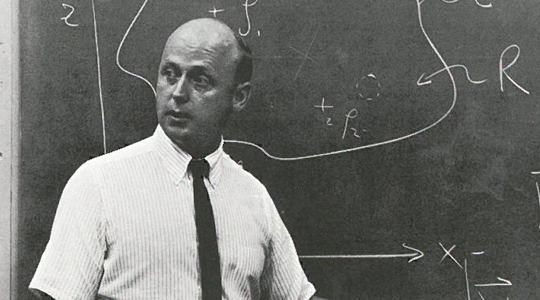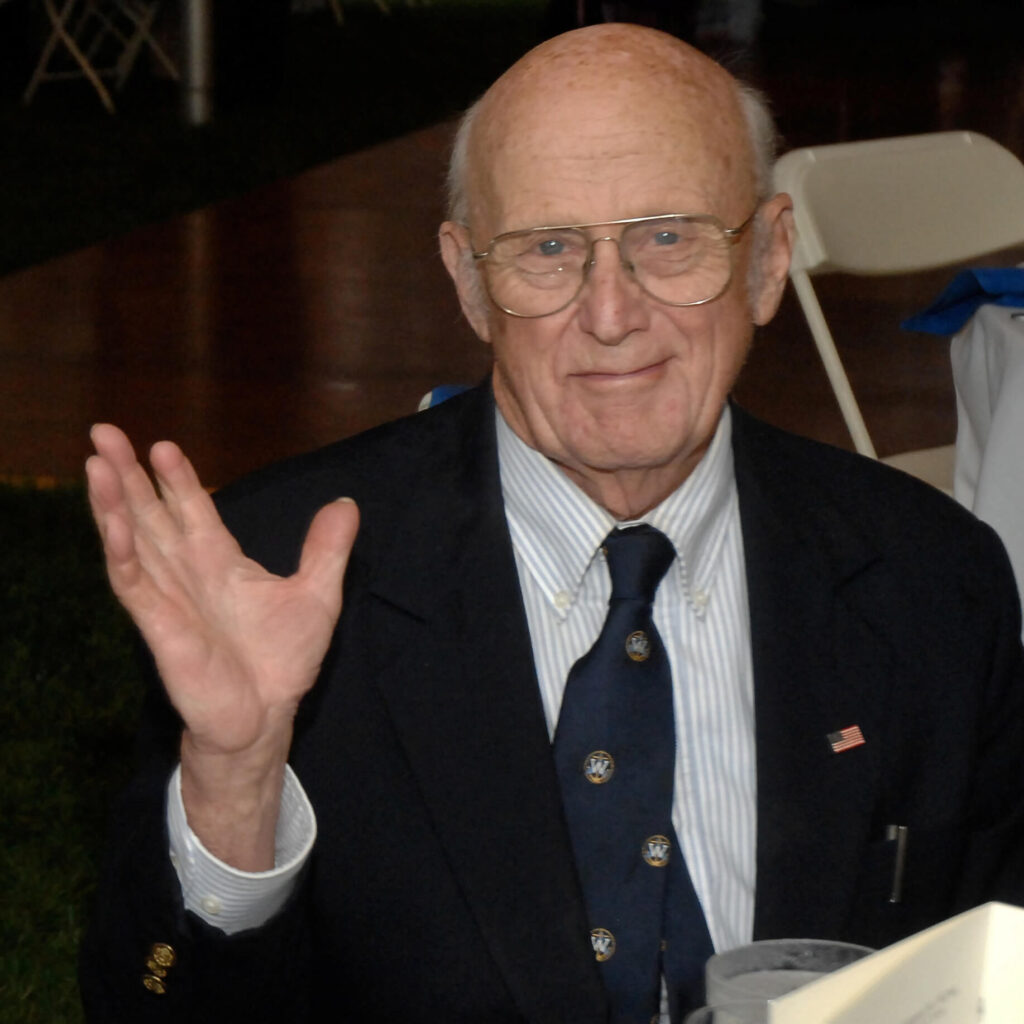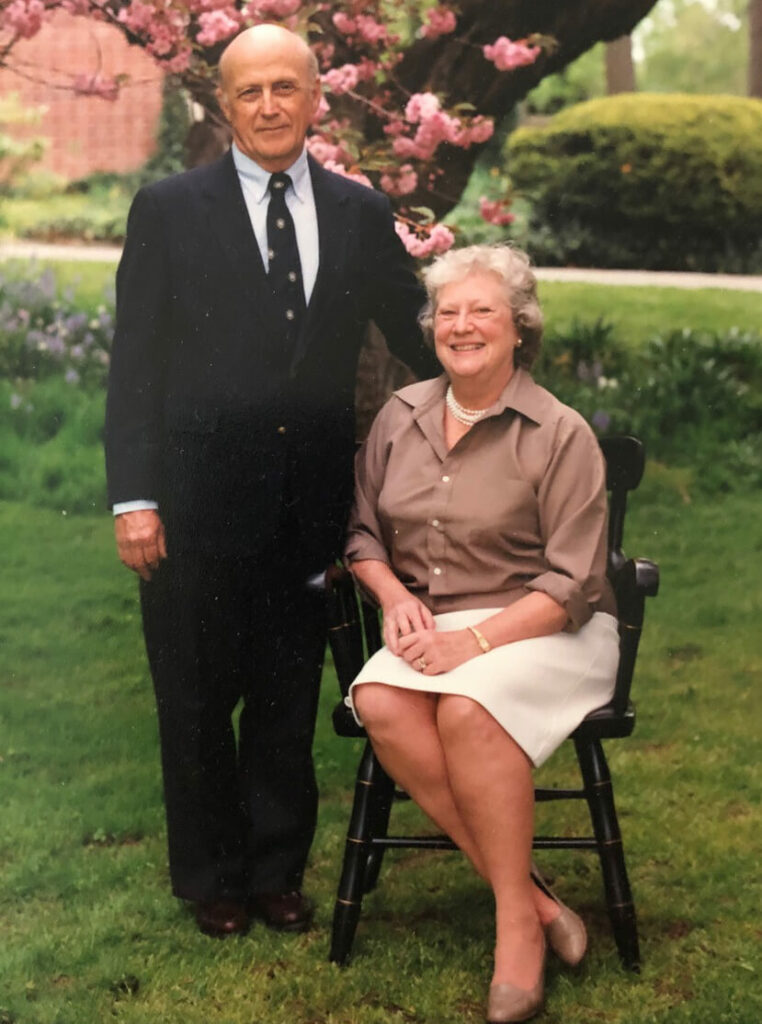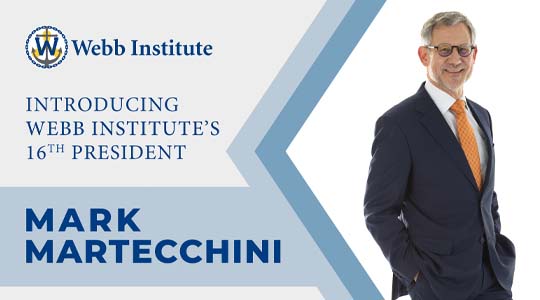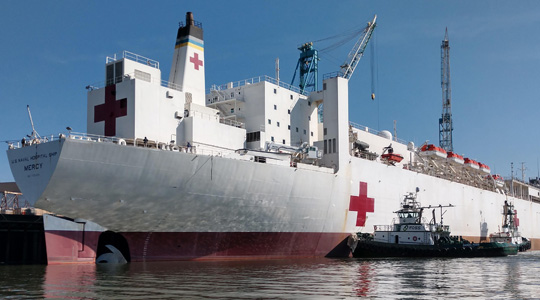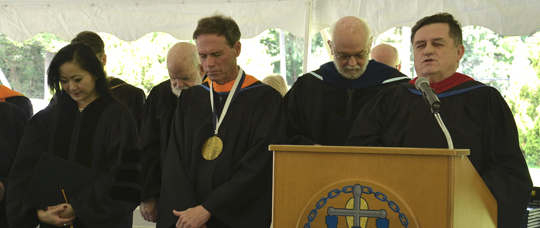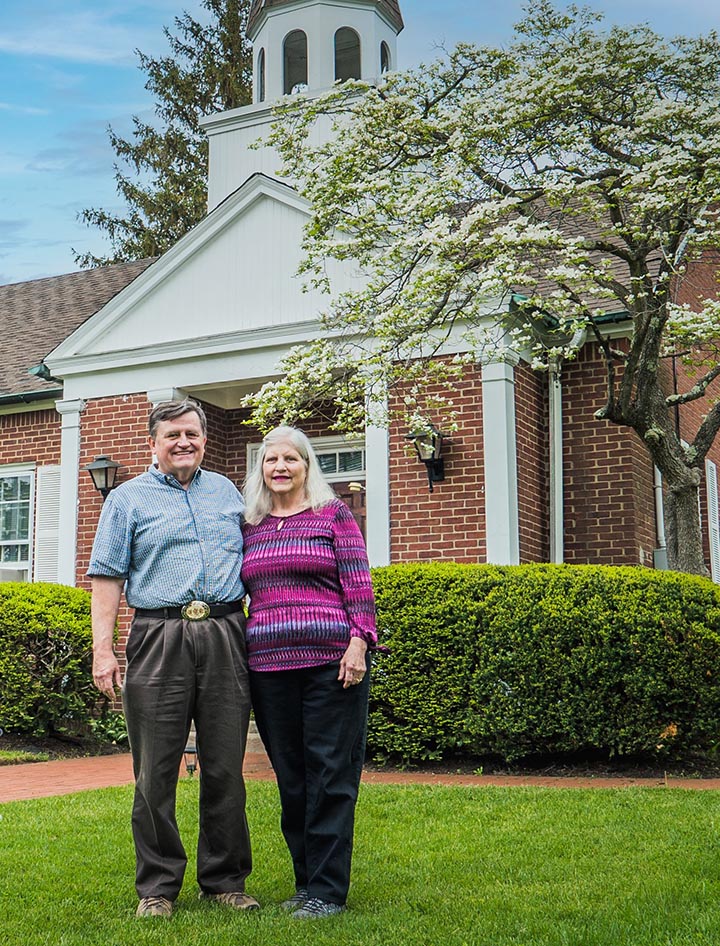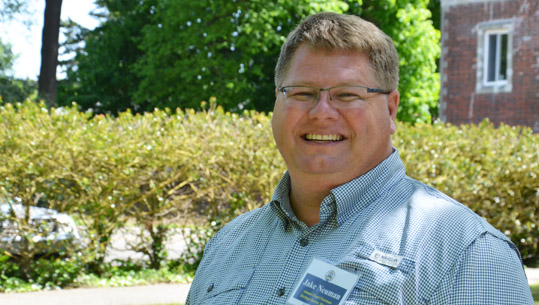In Memoriam: Dr. Lawrence W. Ward PG’51
Photo above: Professor Ward teaching at Webb in 1967
We are sad to report that Professor Larry Ward PG’51 passed away at the age of 96 in Rocky Hill, CT (formerly of Locust Valley, NY) on January 10th, 2022.
Please enjoy a recent article written by Anthony Zic, Webb’s Director of Development, originally published in the 2020-21 Annual Report (p.11). The article captures Professor Ward’s humor and generosity and his legacy, which will inspire future generations of Webbies.
Professor Lawrence W. Ward PG’51: Giving Back to Webb Takes Many Forms
As Professor Ward and I met to discuss this feature article, he shared with me that he had just been thumbing through Edwin L. Dunbaugh’s A Centennial History of Webb Institute of Naval Architecture, reminiscing about the days when he and his late wife Grace hosted Webbies for meals. His smile was all I needed to know about these vivid memories and his family’s love for Webb.
Among his many exceptional attributes, Professor Ward has a remarkable sense of humor. “I created and ran a hockey team called the C+ Team at my skating club. I was sure to get on the team. There was an A and B Team, so that should tell you how good a player I was,” joked Professor Ward.
Professor Ward graduated from University of Michigan with a Bachelor’s degree in Naval Architecture and Marine Engineering in 1948. In 1951, he received a Master’s from Webb in Nautical Engineering while conducting his thesis work under Professor Nevitt. He went on to work for Gibbs & Cox from 1948-51 in the Hull Scientific Division to work on the design of the SS United States, then joined the company’s Hydrofoil Group from 1952-55. In 1958, Professor Ward replaced Professor Bob Jensen to teach Structures and Fluids to both Webb undergraduates and Navy postgraduates, and the Fluids Lab and Flow Channel were later added to his many Webb responsibilities. He would serve as Webb professor for a remarkable 32 years and spent another four years taking care of the Robinson Model Basin (known by many as the Webb Tank).
Professor Ward and his family lived over the Robinson Model Basin for ten years. There were two apartments on the 2nd floor, the other occupied by Captain Robert A. Hinners, USN (Ret.) and his wife. Professor Ward fondly recalls that Webb Beavers helped with various tasks around the apartment and the labs, and as a show of gratitude, the Wards would invite students for meals at the apartment. “They were grateful. It was nice for the students to be a part of a family, our family, and besides, the Webb food was not so great at that time,” recalls Professor Ward.
Professor Ward went on to receive a Doctoral degree from Stevens Institute in 1962, and he conducted his thesis in Experimental Wave Resistance in the Webb Tank. He was then awarded a National Science Foundation fellowship and he and his family spent a year in Hamburg, Germany in 1965, during which time he enjoyed traveling to England, Scotland, and Norway.
In 1974, Professor Ward took the reins from the late Professor Thomas Bond ’45 as the Webb Alumni Fund Chairman. When I asked him why he took on this role, he simply said, “it just had to be done.” I then asked him what kept his record-breaking tenure going, he simply replied “inertia!”
“Larry Ward has been my teacher (at Webb), mentor, cheerleader, and friend for over 50 years. He was my role model as Webb Alumni Fund Chairman—a position he held for 24 years. For Webb graduates entering the workforce, his guidance was “Give a Week for Webb,” and for older alums who could contribute more, he advised “Give until it feels good!” Those two slogans have stood the test of time, and we can thank Larry Ward for putting the Webb Alumni Fund on the growth path that continues through today,” John Malone ’71, Webb Alumni Fund Chairman 1997-2015.
In 1989, Professor Ward received the greatest honor that may be bestowed upon a Webb alumnus, the William Selkirk Owen Award, for outstanding achievement and service to his profession and to Webb. He was a very active member of St. George’s Episcopal Church in New York City, which is how he met his late wife, Grace. Later, he was active at St. John’s of Lattingtown in Locust Valley. Rounding out the Ward family are their three children: John, Chris, and Anne.
The Ward family has been extraordinarily generous to Webb for decades. Professor and Mrs. Ward joined the Heritage Society in 1996 by transferring stock to Webb to establish a Charitable Remainder Annuity Trust. Most recently, Professor Ward established a scholarship fund that provides room and board stipends for Webb students with a demonstrated financial need. When I asked the Professor what prompted him to establish this scholarship fund, he replied, “I guess it still feels good!”
Mark Martecchini Named as Next President of Webb Institute
“It is my honor and great pleasure to announce the election of Mark Martecchini as the 16th president of Webb Institute,” said Board of Trustees chair Bruce S. Rosenblatt. “He is a visionary leader who is passionate about the mission of Webb Institute and is committed to building upon our 130-year history of excellence in engineering education.” Effective July 1, 2022, Martecchini will succeed R. Keith Michel who has served as Webb’s president for the past nine years.
The search process was a rigorous one, led by a Board of Trustee’s search committee consisting of seven members with diverse backgrounds and expertise. From a strong international pool of candidates, the search committee invited three finalists to campus for meetings with students, faculty, administrative staff, and trustees. After taking into consideration input from a broad spectrum of the Webb community, the search committee and the Board enthusiastically and unanimously elected Martecchini to lead Webb as its next president.
Martecchini is recognized for his innovative leadership and advocacy for inclusiveness and sustainability. During a 38-year career with Stolt-Nielsen, he served in a variety of technical, commercial and executive roles, most recently as Managing Director of Stolt Tankers, operating the world’s largest global fleet of parcel tankers. Stolt-Nielsen is an international company focused on the bulk liquid and chemical logistics businesses and aquaculture, with more than 6,000 employees across 30 countries.
Martecchini has served on the boards of the International Chamber of Shipping (ICS), the International Association of Independent Tanker Owners (INTERTANKO), and the International Tanker Owners Pollution Federation (ITOPF). He previously chaired Webb Institute’s Academic and Student Affairs Committee, a standing committee of the Board of Trustees.
“I am honored and excited to be chosen to succeed Keith Michel to lead Webb into the future,” said Martecchini, adding, “a future where sustainability and decarbonization will redraw the map of the maritime industry, with Webb graduates ideally placed to make that change happen. Webb has made huge strides under Keith’s tenure, constructing a state-of-the-art academic center that enables Webb to continue adapting its curriculum and faculty to promote innovation and new technologies.”
In his remarks, Board chair Rosenblatt noted the accomplishments of retiring president Keith Michel. “Enrollment, educational outcomes, student body diversity, and the Institute’s financial strength have markedly increased during Michel’s tenure. We thank him for his many contributions.”
President Michel enthusiastically endorsed the selection of Martecchini as his successor. He explained, “I am excited for Mark and his family and look forward to working with him as we transition the presidency. I have long admired his collaborative approach to leadership and believe he is especially well prepared to lead Webb in this time when rapid technological advancement demands innovative approaches to engineering education.”
Martecchini holds a BS in Naval Architecture and Marine Engineering from Webb Institute and an MBA from New York University. He lives in Rotterdam, Netherlands, with his wife Laurie. They have two children, Niko, who is a 2009 graduate of Webb Institute, and Thomas. With the strong family connection to Webb Institute, Martecchini brings a deep appreciation for the mission and values of the college.
How Many Webbies Does it Take…
by T.J. Brackin ’16
The past year has brought more surprises than any of us could imagine. For many of us, work transitioned to something done from the comfort of our living rooms, rather than in our offices. But for some of us, call us the lucky few if you’d like, our work can’t always be done from home.
This is particularly true when that work includes visiting a ship. In February of this year, a team from Bruce S. Rosenblatt & Associates, LLC (BSR) performed a Deadweight Survey and Inclining Experiment of the hospital ship USNS Mercy. The Mercy is one of two hospital ships owned by the U.S. Government. Many of you probably saw news stories about the Mercy’s trip to Los Angeles to serve as a hospital during the early days of the pandemic. Considering the audience of this article, I suspect that many of you know what I mean when I say “Deadweight Survey and Inclining,” but I’ll give a brief overview just to be safe. The term “deadweight survey” describes the process of inspecting every space aboard a ship, and cataloging the contents – the weight and location of each item – of that space. This, as you might imagine, is rather time-consuming. Then there’s the inclining, which involves moving a series of very heavy weights back and forth across the ship to measure the ship’s stability. Combined, we call these two events a Stability Test.
For any ship, a stability test requires a lot of effort. But for a ship the size of the Mercy, “a lot” doesn’t even begin to cover it. The Mercy can carry more than 2,200 people at full capacity, and at 894 feet, is one of the largest ships the U.S. government owns. So, as you might imagine, BSR needed a little help to pull off such a massive undertaking. Fortunately for us, the timing of the stability test coincided with the Winter Work Term at Webb. Of course, BSR and Webb are certainly not strangers. At the moment, BSR has eight recent graduates on its staff: Andy Thompson ’15, T.J. Brackin ’16, Blake Loncharich ’18, L.J. Bock ’20, Mary McGuinness ’20, Rocky Regan ’20, Harrison Tack ’20, and Mike DeNapoli ’20. For the Mercy task, BSR’s staff was bolstered by three current Webb Students: Cross Weeks ’21, who will be joining the company post-graduation; Gabe Allen ’23; and Eric Heilshorn ’23, bringing us to a grand total of 11. Together, this unprecedented concentration of Webb talent tackled the Mercy Stability Test.
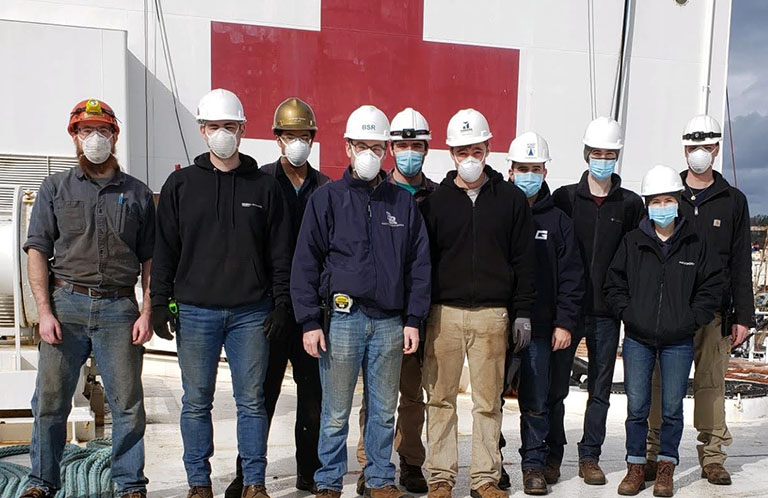
At this point, I’m hoping I’ve convinced you just how much effort went into this endeavor, but just in case you don’t believe me, I have some numbers to help make my case (in true engineer fashion). The first number is time spent. All in, the BSR team spent a combined 176 working days aboard the Mercy, which works out to more than two weeks per person. In that time, the team surveyed 842 different spaces aboard the ship. We documented everything from toilet paper to CPR dummies to spare electric motors. If it was aboard the ship we surveyed it, and in some cases, we even surveyed things that weren’t on the ship. When all was said and done, the BSR Team had surveyed 2,020,480 lbs. of weight aboard the Mercy. For comparison, that’s approximately the weight of five Boeing 747 airliners. Suffice to say that all of us were pretty exhausted by the time we got back to the hotel each evening!
Then there’s the inclining. We had to coordinate with the ship and shipyard to have huge steel weights brought aboard, have tugs available to maneuver the ship away from the pier, cranes to move the weights during the test, and a small boat in the water alongside to take draft readings. Data collection stations had to be set up. And we had to have mother nature give us a calm weather day. Somehow, after months of planning, the test was successfully completed.
But, in true Webb fashion, we made sure we weren’t too tired to have one or two socially-distanced social gatherings while we were there as well. Despite having a team that spanned almost a 10-year range in graduating classes, there’s something about the Webb family that binds us and made the experience feel like we’d all known each other for years. I’m sure I speak for the entire team when I say that it was an experience we won’t soon forget!
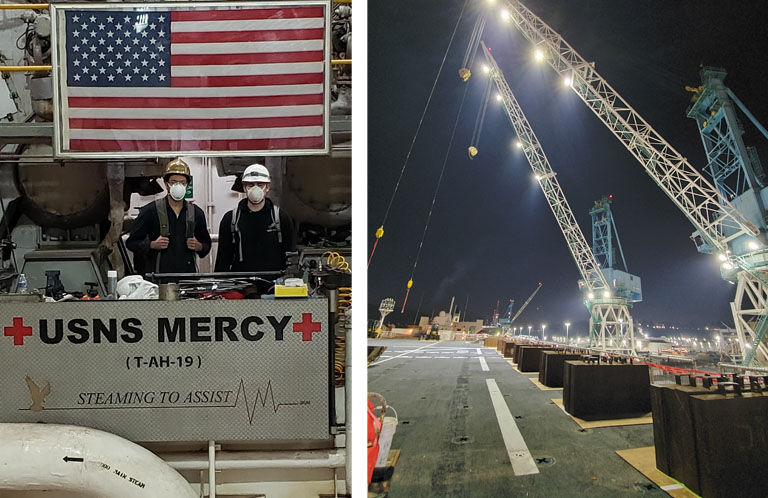
This article is also available on Webb News.
Alumni Spotlight: David H. Collins ’73, Pastor, Sea Cliff Gospel Chapel
by Gailmarie Sujecki (Hon.)
This unassuming and kindly gentleman has had an impact on the spirituality of students, past and current, and, I am sure, will continue to do so well into the future. David Collins ’73 and his wife, Meryl, have opened their home to students for years, as a chance to get off campus and decompress in a relaxing environment.
Growing up in Massachusetts, he enjoyed engineering, old wooden ships, and technology. It was a guidance counselor who introduced him to Webb Institute of Naval Architecture. He did apply to other schools, but Webb won his heart, so off to Glen Cove he headed. The rigors of a Webb education are demanding, but assembling other students for a game of volleyball at 1:00 am was not unheard of. There was one night that he needed another outlet. As a senior, Dave was aware of a student prayer time in the faculty dining room. Through them, he found God’s help in dealing with the stress of senior year. It was then and there that he started his spiritual journey. At the Webb Centennial, classmate Rich Celotto said, as he welcomed Dave, “You’re still a naval architect, just a spiritual naval architect helping people craft lives to weather the storms of life.”
Upon his graduation he went to work for George G. Sharp, Inc. in New York City for two years and then decided he wanted a better understanding of the Bible, so he took a leave of absence to pursue a degree in Religious Education for a year. He returned to George G. Sharp but was working with young people at church, prompting his return to seminary where he ended up with Master of Divinity at Trinity Evangelical Divinity School.
Pastor Collins returned to the Sea Cliff Gospel Chapel to do his internship, where he had been attending while at Webb. At this time, at a young adult gathering, he met his wife, Meryl, in the living room of the house they now live in – that was in June of 1977; by Christmas, they were engaged and then married in August of 1978. Dave was called to Pastor the Sea Cliff Gospel Chapel in 1978, where he has been ever since.
The crossover between engineering and the ministry runs deep in his family. His father was a mechanical engineer (Navy pilot) and then joined the ministry; one son is a civil engineer; another son is in the ministry in Pittsburgh; and his foster son, who they took in as a high school student, is a successful car salesman.
It was in the early 1980s that Pastor Collins began providing spiritual guidance to Webb students. And he has done so as students have requested help. His Church Service is available on Facebook service, and daily devotionals are posted there. Anchor Club has lately been reaching out to the Webb community with pizza and dialogue.
Matt Graham ’14 is so glad to hear the Anchor Club is still thriving! Matt named the group after Hebrews 6:19, and it definitely helped keep him stay partially sane. “Dave gave some great tips on how to lead bible studies and helped him learn how to form/ask good discussion questions. Dave attended almost all of them and often brought some great snacks. Dave also met with several students one-on-one, which really helped him. He really appreciated all the time Dave invested in us. Thanks, Dave!”
He has been meeting virtually twice a week with students for bible study/prayer time. During freshman orientation he invites the class to explore their spirituality, challenging them to fill out the other side of their lives. He has been with the Chapel for 43 years. In addition, he has presented the benediction and invocation at Commencement and blessed many a meal at on-campus events. He is always willing and able to help in any way possible, including cheering on the Webbies at athletic events, as well as individual counseling as requested.
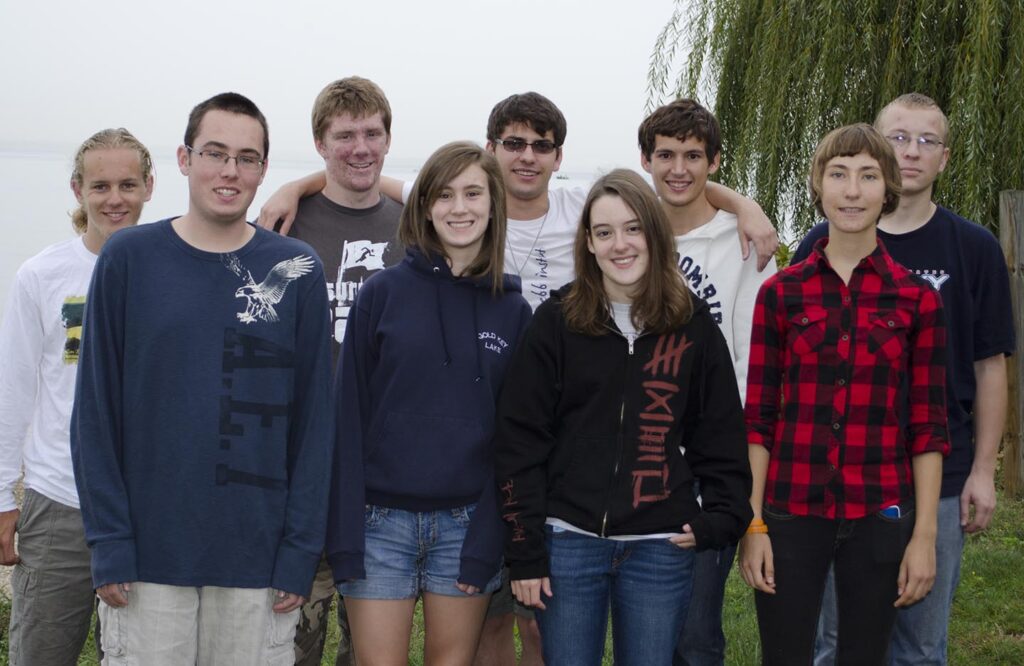
He feels students must develop more than just engineering knowledge. We need to care for our whole being, mind, body, and spirit. Webb stretches our minds. We need to also take care of our bodies, which sports, and other activities help. Then there is our spirit, which is easy to neglect in the stress of the Webb educational environment, connecting with a local house of worship, and Anchor Club can help us fill out that side of our being.
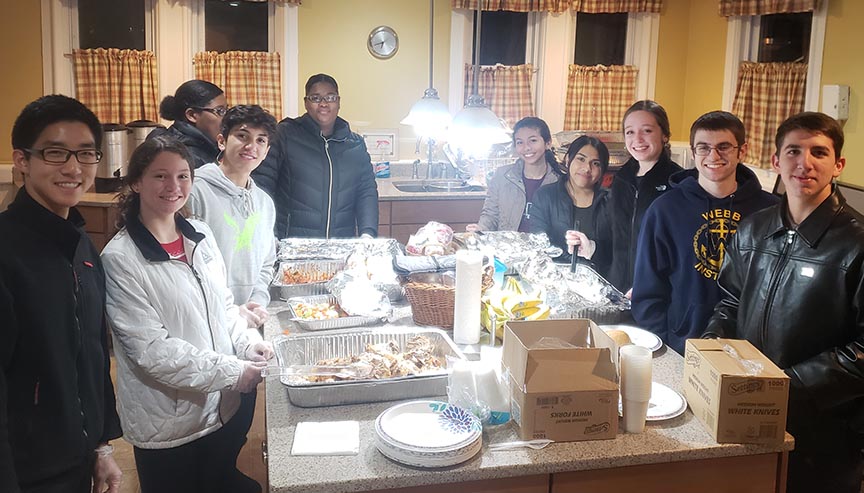
Spirituality: the quality of being concerned with the human spirit or soul as opposed to material or physical things.
David Rhoton ’87: “Pastor Collins is remembered as a friendly, supportive kind of a guy you could talk to about anything and receive a balanced, well-reflected response from, and if I were to go back in time and give myself some advice, it would include being more proactive about meeting with him and talking through some of my inner struggles and concerns much more openly.”
Jackson Juska ’21: “Pastor Collins has also gone above and beyond in expanding the views and values of the students in Anchor Club. His true wish to draw people together, even people of other faiths or spiritual backgrounds, is evident in his invitations to dinners and barbecues at his house or by encouraging and supporting the Webbies in serving the less fortunate of Glen Cove. It is safe to say, Pastor Collins has helped many students thrive through the rigors of Webb.”
Hank Rouland ’21 feels that Dave Collins’ impact has been profound, an invaluable and enduring source of encouragement for students seeking to take their faith seriously. Dave Collins’ unassuming and unfaltering faithfulness, care, and hospitality have modeled Christ’s character to generations of Webb students.
Dan Desio ’21: “Pastor Collins is a kind and loving person who provides wonderful insight to anyone that asks.”
Setting a New Fundraising Record!
by Jake M. Neuman ’93
Chairman of the Webb Alumni Fund
This year’s Webb Alumni Fund (WAF) total of $2,588,845 raised surpassed our previous record giving of $2,561,658 in 2019-20, the final year of the Campaign for Webb. We achieved 70.3% participation, after some strong outreach at the bitter end. We accomplished this unprecedented giving level despite a strong headwind—the ExxonMobil Foundation ended their matching program which provided approximately $190,000 in WAF 2018-19. Well done Webb alumni! A special thank you to Exxon/Mobil employees who contributed above and beyond their usual contribution levels to maximize the final year of the ExxonMobil Foundation match.
We, as an alumni body, have to encourage our classmates, colleagues and fellow alumni to contribute annually, and keep up our nation-leading, “eye popping” participation rates, so that other foundations, corporations and other philanthropists are inspired to make similar investments in Webb. Keeping our participation at 70% in recent years has been very challenging.
Class Agents demonstrated their dedication by participation in the 2024 Class Agent Forum, which took place during Webb’s Homecoming Weekend. 27 Class Agents joined in person or via Zoom on Friday, May 17th & Saturday, May 18th. Several topics were covered, including Class Agent outreach that worked well, and identifying ways to customize communications where a “one-size approach does not fit all.” After all, Webb has approximately 1,100 alumni who are diverse in age and geographic location. One point of focus was the “Week for Webb” giving concept that is supported by many and has growing support.
A huge thanks to the Class Agents and the Development Office for their time and efforts dedicated to the Webb Alumni Fund; students for their outreach during the thank-a-thon and phone-a-thon; and spouses and honorary alumni. The success of the WAF truly is a team effort, thank you!
In 2024-2025, our WAF goals are to collectively contribute $2,500,000 from 71% of alumni. This is an achievable goal given that our all-time highs—an average gift of $2,587 and 76.4% participation—were both recorded during the past 10 years. Meeting these goals will mean that we not only commit by making a gift, but also inspire fellow alumni to give.
Some of the key ingredients that helped to make the WAF 2023-24 a success were special class/reunion fundraising initiatives including:
- Class of ′23: all but one senior participated by contributing room security deposits to assist relocation of the laundry room into the STH blue room
- Class of ′63: (two-year project): has secured $30,030 to in restricted gifts for the establishment of a room and board scholarship fund
- Class of ′73: (two-year project): Over $151,000 has been received by Webb to date; renovations are targeted for Summer 2025
- Class of ′74: led by Class Agent Steve Judson, raised $25,740 to sponsor the recently completed Art Preservation Project
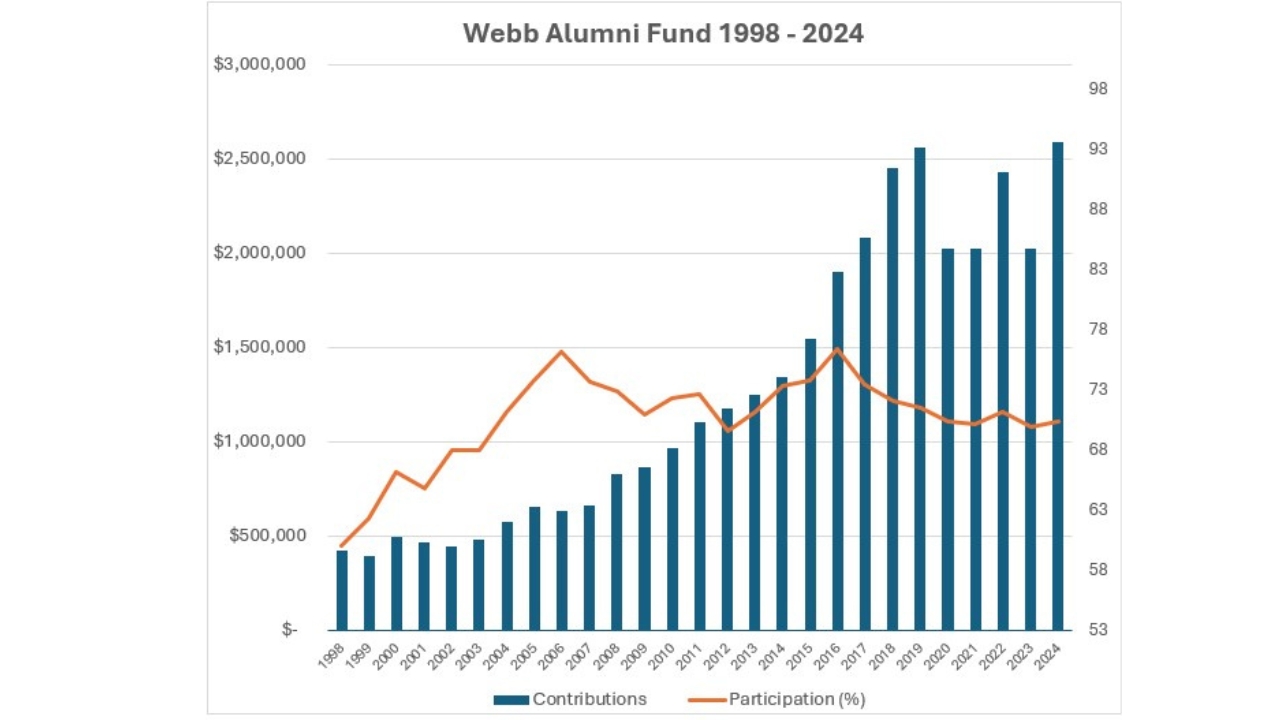
You can have a big impact on the future of our fundraising success by:
Maximizing your current giving levels – The WAF average gift is $3,136 and the median gift is $1,000. Maybe these are goals you can strive for or comfortably exceed, depending on your circumstances. Are you giving “a Week for Webb?” If you already are, would you consider increasing your gift?
Giving EARLIER in the giving year – Too many alumni wait until the end of the giving year, creating significant peak work for Class Agents, the Development staff and myself. Consider giving by or before Webb Giving Day (Homecoming). This will streamline our workload AND we can raise more money by focusing on alumni that either don’t give regularly or have not yet given at all.
Serving as an ambassador for the WAF and Webb – Help your fellow Class Agents by encouraging classmates to maximize their giving, and to give as early in the giving year as possible. Sharing your giving strategies (monthly giving, gifts of stock, gifts leveraging donor advised funds, charitable distributions from your IRA, etc.) may inspire a new gift or new giving levels from your peers!
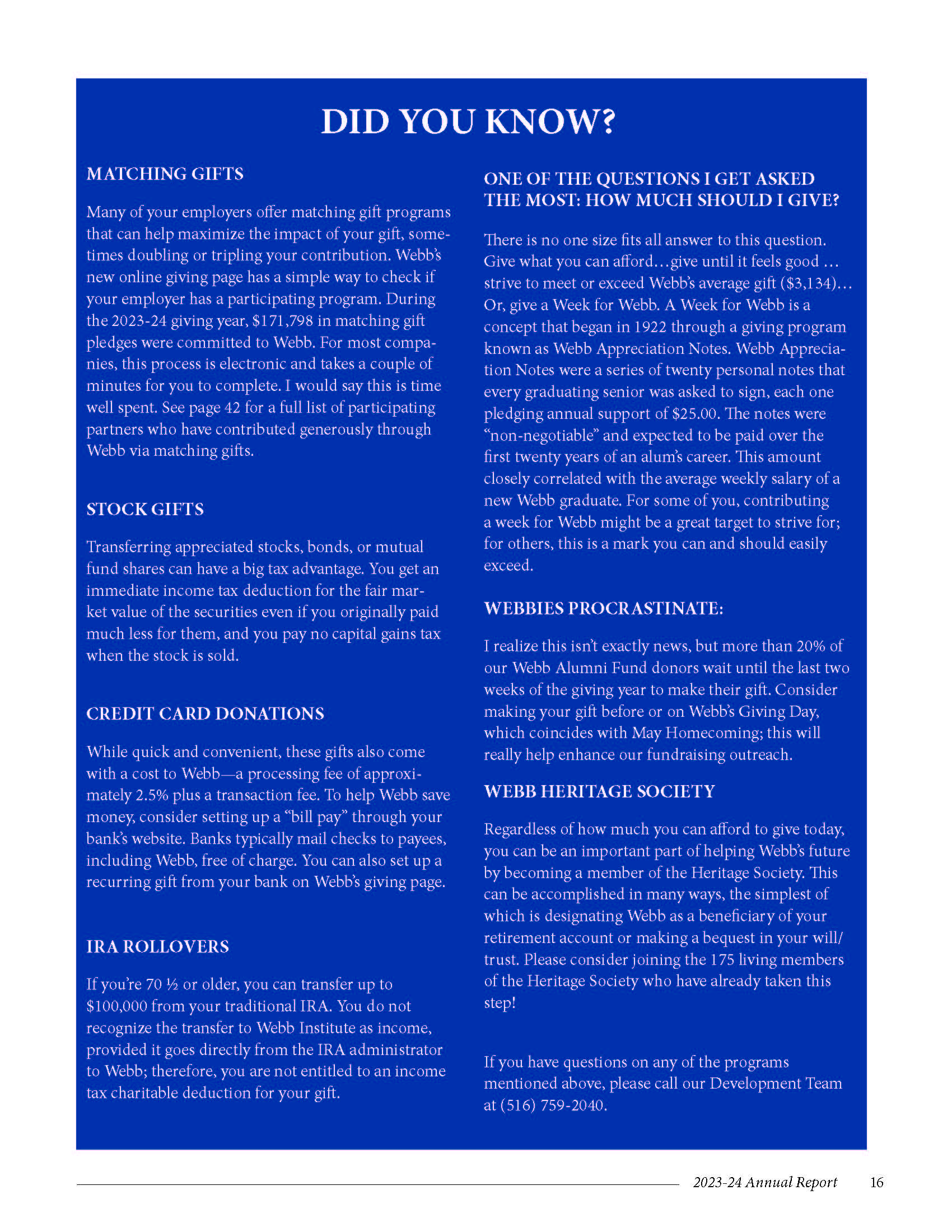
For the PDF File, Click Here | Did You Know?
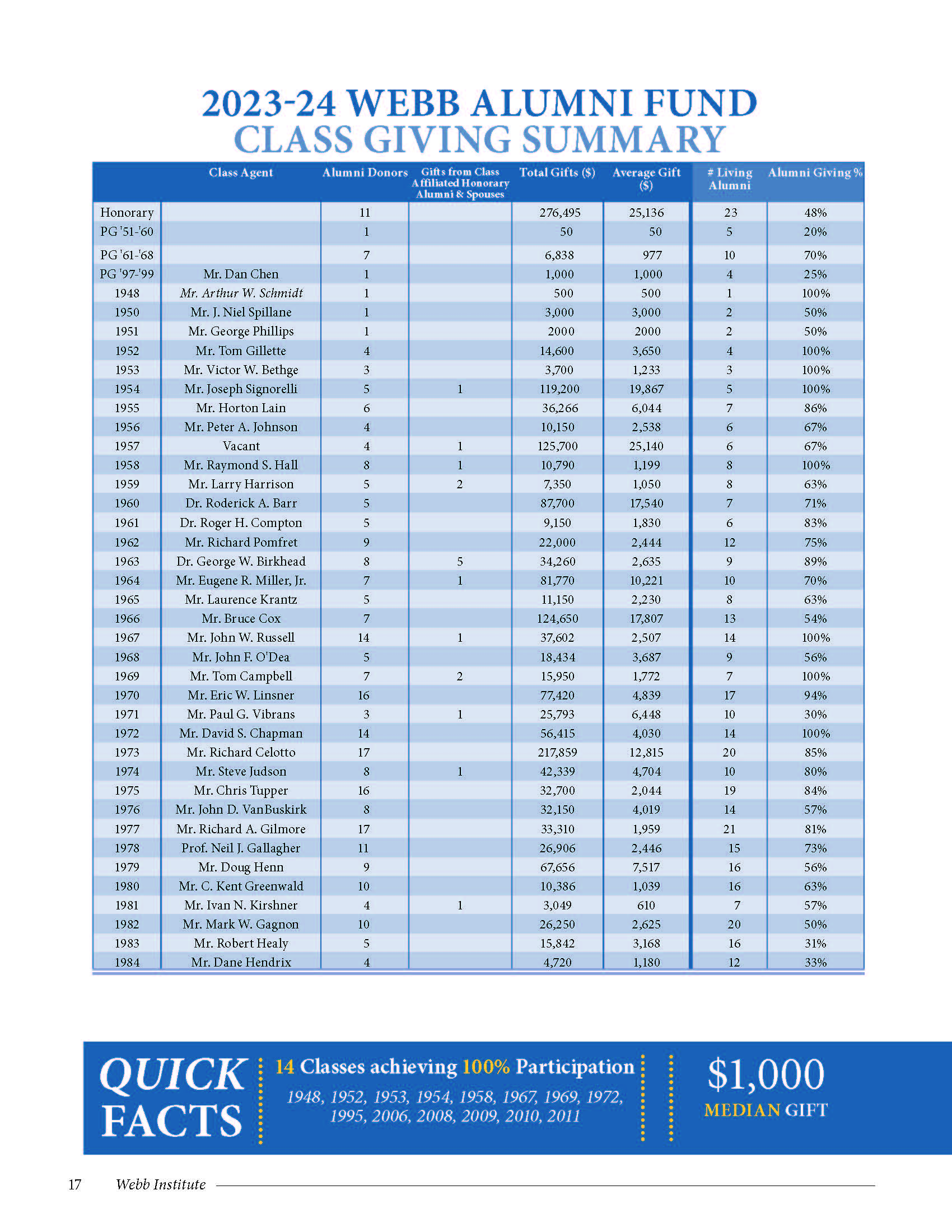
For the PDF file click here | 2023-24 Webb Alumni Fund Class Giving Summary P.1 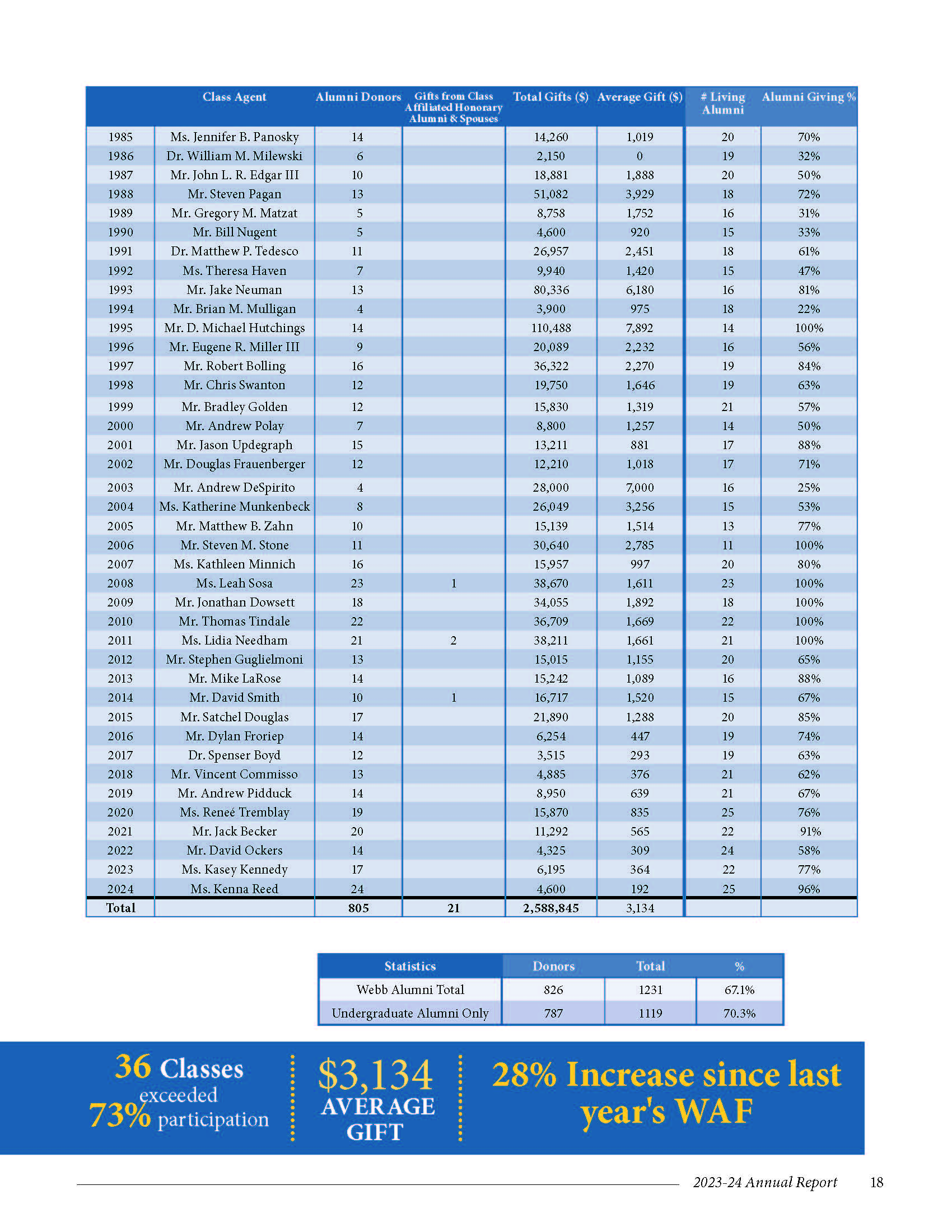
For the PDF file click here| 2023-24 Webb Alumni Fund Class Giving Summary P.2

